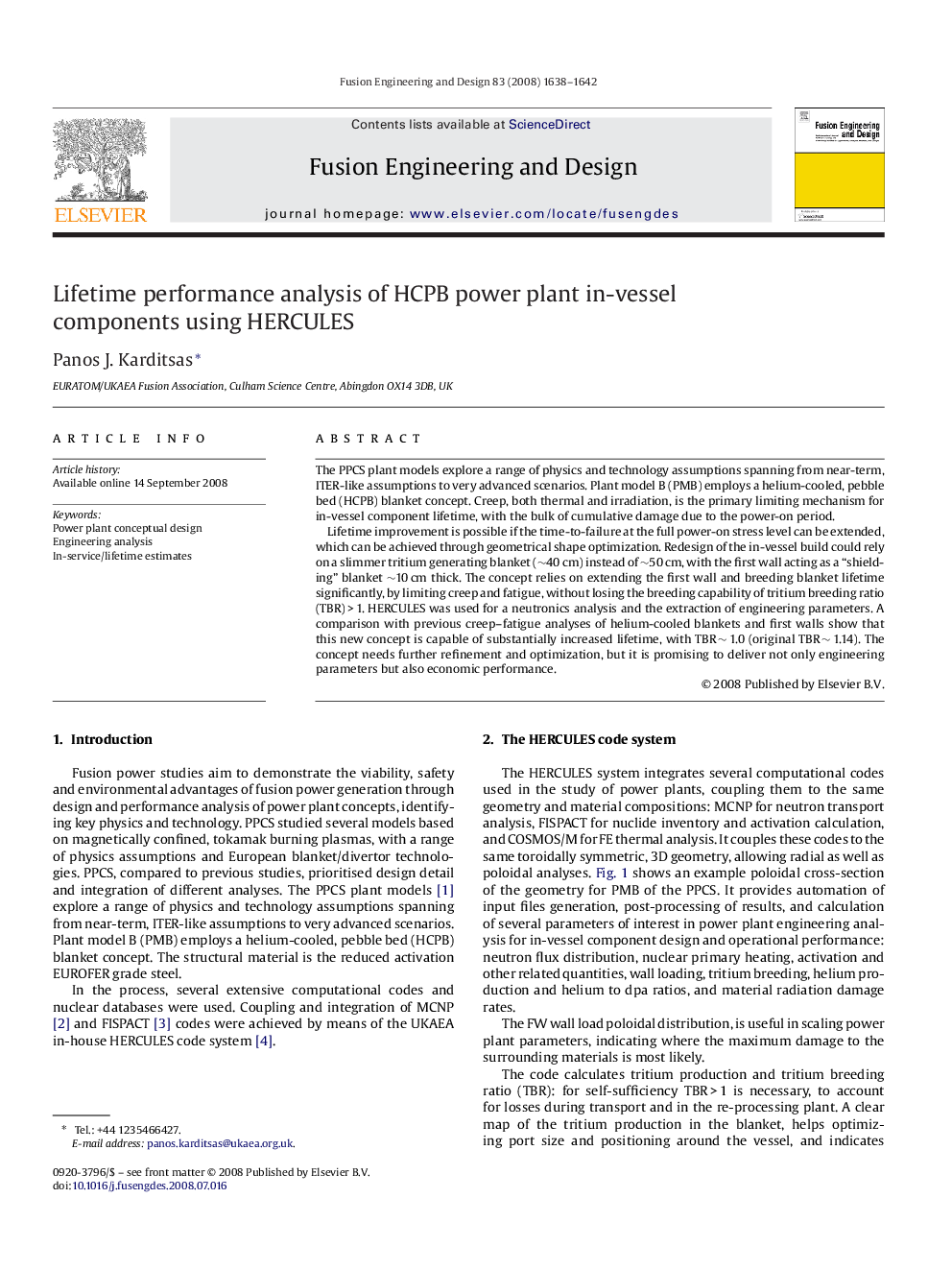| Article ID | Journal | Published Year | Pages | File Type |
|---|---|---|---|---|
| 272772 | Fusion Engineering and Design | 2008 | 5 Pages |
The PPCS plant models explore a range of physics and technology assumptions spanning from near-term, ITER-like assumptions to very advanced scenarios. Plant model B (PMB) employs a helium-cooled, pebble bed (HCPB) blanket concept. Creep, both thermal and irradiation, is the primary limiting mechanism for in-vessel component lifetime, with the bulk of cumulative damage due to the power-on period.Lifetime improvement is possible if the time-to-failure at the full power-on stress level can be extended, which can be achieved through geometrical shape optimization. Redesign of the in-vessel build could rely on a slimmer tritium generating blanket (∼40 cm) instead of ∼50 cm, with the first wall acting as a “shielding” blanket ∼10 cm thick. The concept relies on extending the first wall and breeding blanket lifetime significantly, by limiting creep and fatigue, without losing the breeding capability of tritium breeding ratio (TBR) > 1. HERCULES was used for a neutronics analysis and the extraction of engineering parameters. A comparison with previous creep–fatigue analyses of helium-cooled blankets and first walls show that this new concept is capable of substantially increased lifetime, with TBR ∼ 1.0 (original TBR ∼ 1.14). The concept needs further refinement and optimization, but it is promising to deliver not only engineering parameters but also economic performance.
